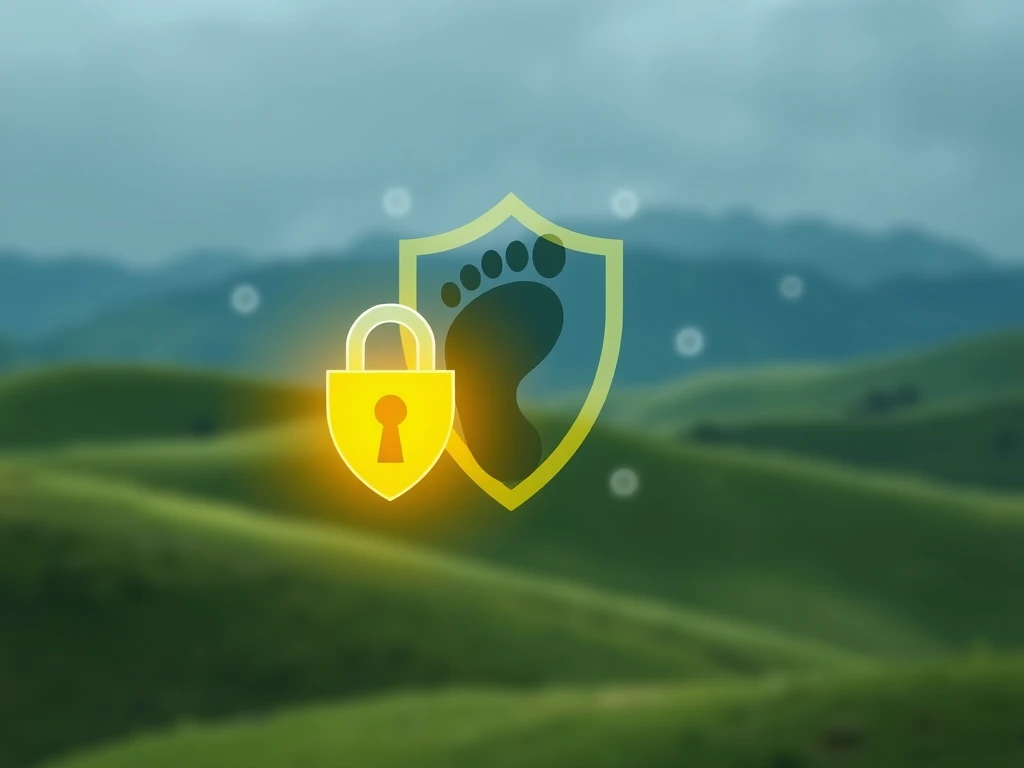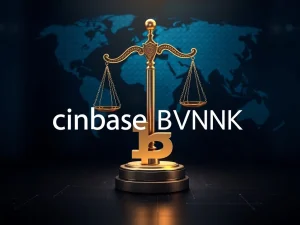Urgent: Digital Identity Theft in Crypto – How to Protect Your Assets

Imagine your digital life as a complex map. Every login, every transaction, every social media post adds detail. For cryptocurrency holders, this map includes valuable assets. When this map falls into the wrong hands, the consequences of digital identity theft can be devastating. It’s not just about your online reputation; it’s about direct access to your funds. In the fast-paced world of crypto, where identity and financial access are tightly linked, understanding and preventing this threat is critical.
Understanding Digital Identity Theft and Its Impact on Crypto
Your digital identity is the sum of your online presence – from basic details like name and email to complex data like browsing habits and device fingerprints. In the cryptocurrency space, this identity is intrinsically tied to your wallet addresses, exchange accounts, and transaction history. This makes you a prime target for digital identity theft.
Why are crypto users particularly vulnerable?
- Decentralization: While offering freedom, decentralized platforms sometimes lack robust identity verification processes, making synthetic identity fraud easier.
- Irreversibility: Crypto transactions are often final. Once funds are stolen, recovery is extremely difficult.
- High Value: Cryptocurrency represents significant wealth for many, making it a lucrative target for criminals.
- Complexity: The technical nature of crypto can be confusing, leading users to make security mistakes.
Experts predict a significant rise in compromised digital identities globally, with crypto users facing elevated risks, especially on less secure DeFi platforms.
Why Crypto Identity Theft is a Growing Concern
The unique characteristics of the crypto ecosystem amplify the risks associated with identity compromise. Crypto identity theft isn’t just about someone using your name; it’s about gaining control over your private keys, draining your wallets, or taking out loans in your name on lending platforms. The anonymity sometimes associated with crypto can paradoxically make it harder to track down perpetrators after an attack.
Common scenarios for crypto identity theft include:
- Gaining access to exchange accounts via stolen login credentials.
- Stealing private keys or seed phrases through phishing or malware.
- Exploiting vulnerabilities in smart contracts or decentralized applications (DApps) after impersonating a user.
- Using stolen identity documents to pass KYC checks on platforms to cash out illicit gains.
The overlap between your personal identity and your financial access in crypto means that a breach can instantly translate into financial loss.
Common Methods Behind Online Identity Theft
Cybercriminals employ a variety of tactics to achieve online identity theft. They blend technical exploits with psychological manipulation. Understanding these methods is the first step in defending yourself.
Key attack vectors include:
- Phishing: Crafting fake websites or emails that mimic legitimate services (exchanges, wallets) to trick users into revealing sensitive information like passwords or seed phrases.
- Data Breaches: Large-scale leaks of personal data from compromised companies, providing criminals with databases of credentials to test on other sites.
- Credential Stuffing: Using username/password combinations leaked in one breach to attempt logins on many other platforms, hoping users reused their passwords.
- Social Engineering: Manipulating individuals through emotional appeals or deceptive scenarios to voluntarily give up information. This could involve fake support calls or urgent-sounding emails.
- Synthetic Identity Fraud: Creating entirely new identities by combining real information (like a valid SSN) with fabricated details (fake name, address, birth date). This is particularly challenging to detect and is impacting new crypto lending services.
Staying aware of these techniques makes you less susceptible to falling victim to online identity theft.
The Dark Reality of Your Stolen Digital Identity on the Black Market
Once your digital identity is compromised, the information often doesn up for sale on the dark web. This creates a persistent threat, even after you take steps to secure your accounts. Your stolen digital identity becomes a commodity in a thriving underground economy.
What’s being sold?
- Individual pieces of data (emails, passwords, credit card numbers).
- Full identity profiles (including names, addresses, SSNs, and potentially crypto-related details like wallet access info).
- Access to compromised accounts.
The danger is that a buyer of your stolen digital identity might not use it immediately. It could be used months or even years later, leading to delayed attacks. This is why monitoring services that alert you if your data appears on the dark web are becoming essential tools for long-term protection.
Spotting the Red Flags: Signs of Stolen Digital Identity
Catching identity theft early can significantly reduce the damage. Being vigilant and knowing what to look for is crucial. Have you noticed any of these signs?
Warning signals that your stolen digital identity might be actively used include:
- Unexpected password reset notifications for accounts you haven’t tried to access.
- Being suddenly logged out of multiple devices or finding you can’t log in to accounts.
- Notifications about new accounts, credit lines, or loans opened in your name that you didn’t authorize.
- Unauthorized transactions, withdrawals, or transfers from your bank accounts or cryptocurrency wallets.
- Receiving bills or mail for services or products you didn’t purchase.
- Strange devices or sessions listed as having access to your online accounts.
If you spot any of these indicators, don’t delay. Act fast to prevent further harm.
Taking Action: What to Do If Your Digital Identity is Compromened
Discovering your identity has been compromised is alarming, but swift, decisive action is key to limiting the fallout. If you suspect your digital identity is compromised, prioritize locking down your accounts.
Immediate steps:
- Change Passwords: Update passwords for all critical accounts, starting with email, banking, and crypto services. Use strong, unique passwords.
- Enable 2FA: Activate two-factor authentication on every platform that supports it. This adds an extra layer of security beyond just a password.
- Freeze Accounts: Contact your banks, credit card companies, and crypto exchanges to inform them of the potential breach and request temporary freezes on your accounts.
- Review Sessions: Log out of all active sessions on platforms like Google, social media, and exchanges. Remove any unrecognized devices with access to your accounts.
- Scan for Malware: Run a thorough scan on your devices (computer, phone) to check for viruses or spyware that could have compromised your information.
Beyond these immediate actions, you should report the incident to relevant authorities, such as local cybercrime units or financial protection agencies. Using online resources dedicated to identity theft recovery can also provide structured guidance.
Proactive Steps to Protect Digital Identity
The best defense against identity theft is prevention. Building strong security habits is crucial. Here’s how to actively protect digital identity in today’s environment:
- Strong, Unique Passwords: Never reuse passwords. Use a password manager to create and store complex, unique passwords for every account.
- Mandatory 2FA: Enable two-factor authentication (2FA) or multi-factor authentication (MFA) on all accounts, especially financial and crypto platforms. Hardware keys (like YubiKey) offer the strongest protection.
- Be Wary of Phishing: Always double-check URLs and email addresses before clicking links or providing information. Be skeptical of urgent requests for personal data.
- Limit Information Sharing: Practice digital minimalism. The less personal information you share publicly online, the less data criminals have to work with.
- Secure Your Devices and Network: Keep your operating systems, apps, and antivirus software updated. Avoid public Wi-Fi for sensitive transactions; use a Virtual Private Network (VPN) instead.
- Monitor Your Accounts: Regularly check bank statements, credit reports, and crypto wallet activity for any suspicious transactions or accounts you don’t recognize.
- Consider Decentralized Identity Solutions: Support and use platforms exploring blockchain-based identity systems. These can give users more control over their data and reduce reliance on centralized databases, making them harder targets for breaches.
- Stay Informed: Educate yourself on the latest scams and security threats targeting crypto users.
Making these practices part of your routine is the most effective way to protect digital identity long-term.
Conclusion
Your digital identity is a valuable asset, particularly when it’s linked to your financial life in the crypto space. The threat of digital identity theft is real and evolving, but it’s not insurmountable. By understanding how attackers operate, recognizing the warning signs, taking swift action if compromised, and implementing strong, proactive security measures, you can significantly reduce your risk.
Protecting your digital identity requires ongoing vigilance and adaptation. In a world that is increasingly digital and decentralized, mastering these security skills is as fundamental as managing your finances. Stay sharp, stay secure, and protect your online independence.







